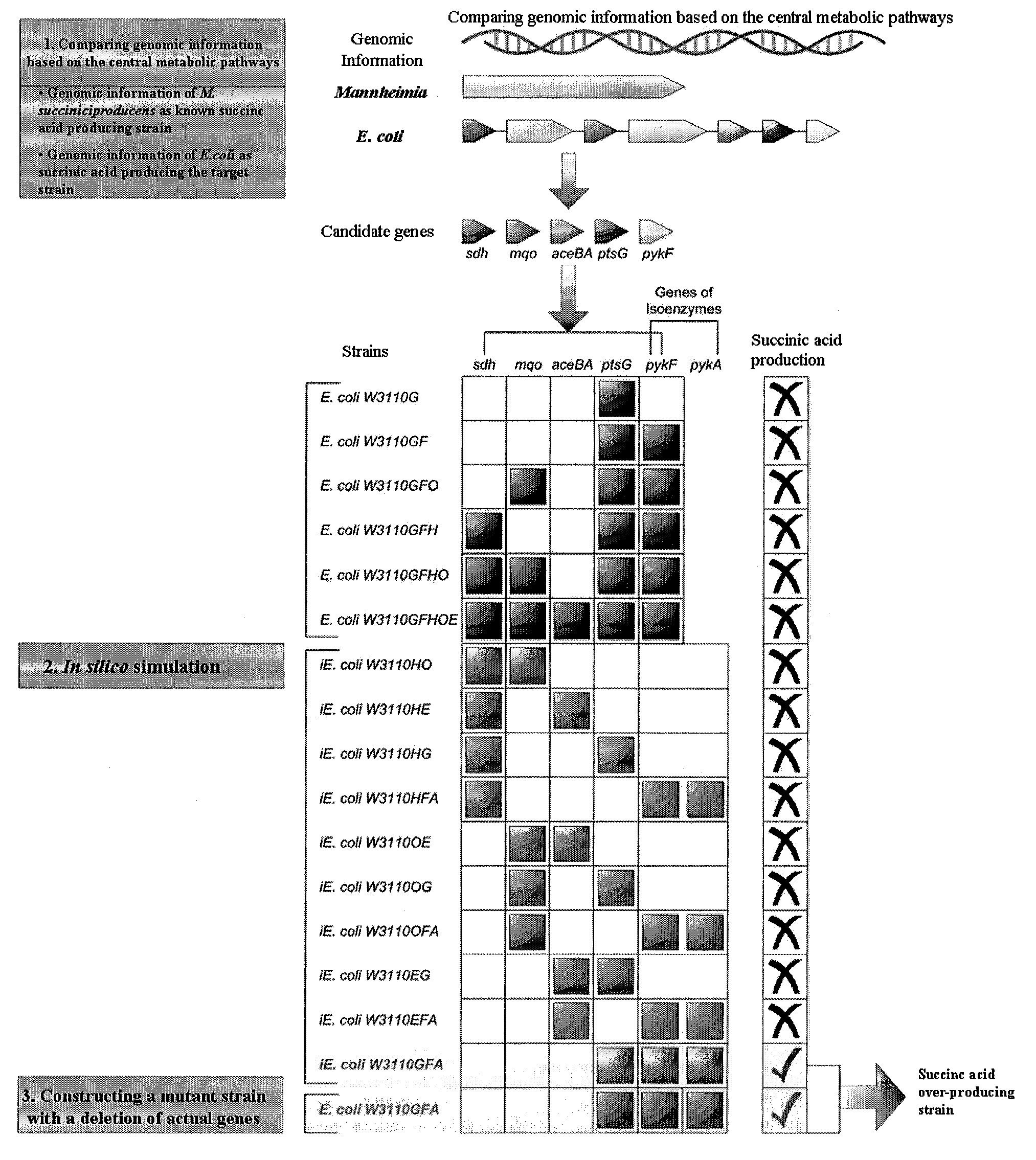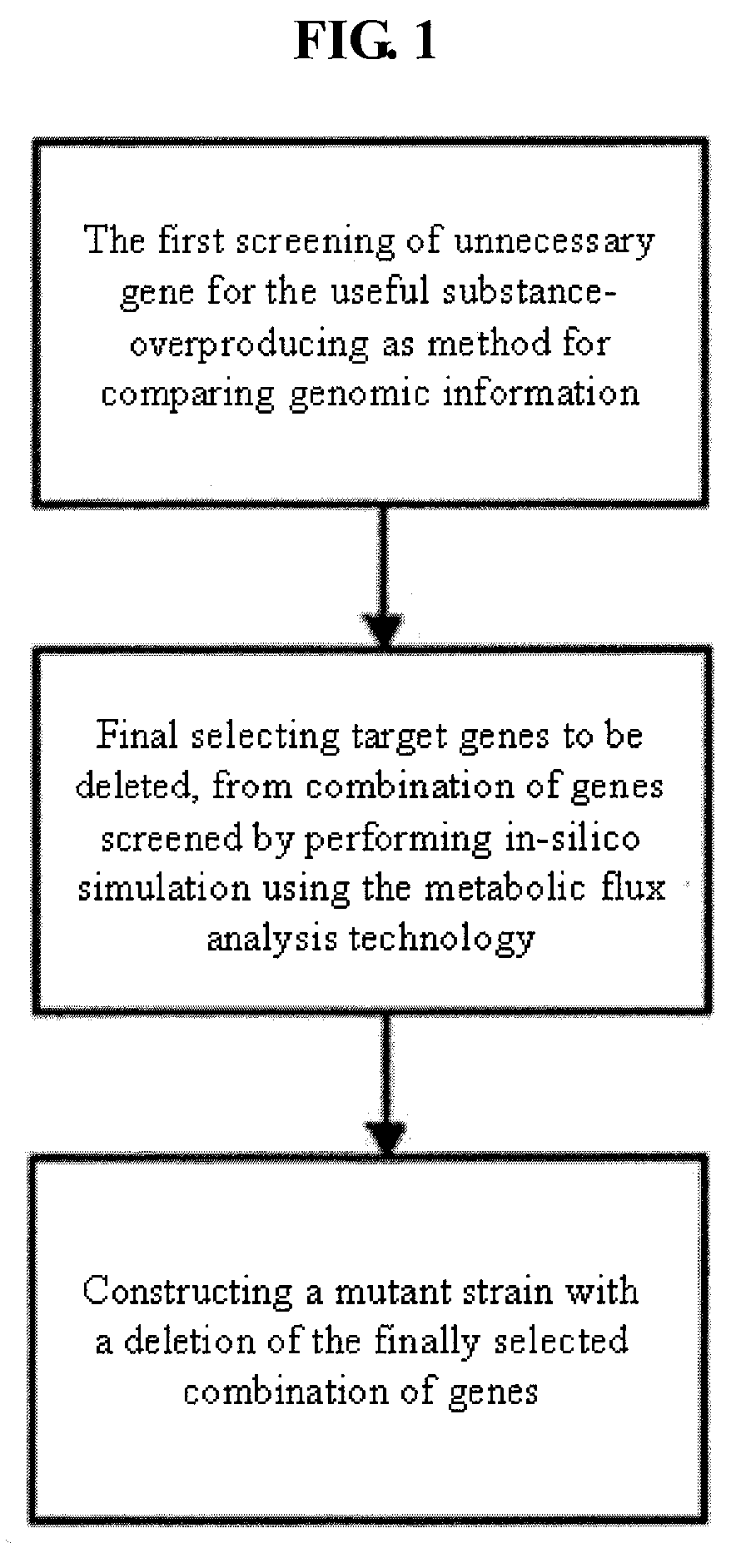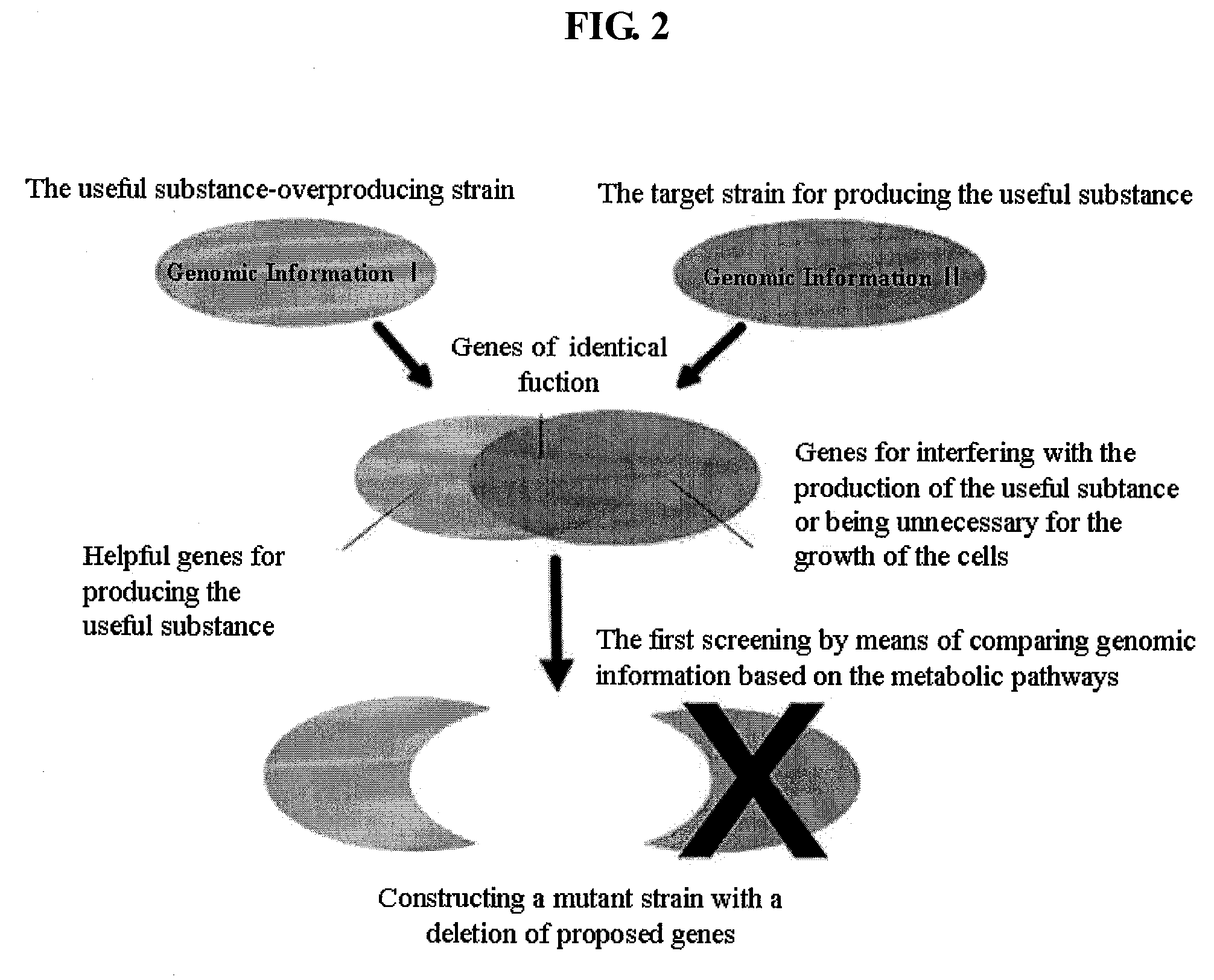Method For Improving A Strain Based On In-Silico Analysis
- Summary
- Abstract
- Description
- Claims
- Application Information
AI Technical Summary
Benefits of technology
Problems solved by technology
Method used
Image
Examples
example 1
Construction of Model systems
[0058]As model systems, an E. coli mutant strain, a recombinant E. coli strain and Mannheimia succiniciproducens, which is a succinic acid-producing strain, were selected. For this purpose, new metabolic flux analysis systems for E. coli and Mannheimia were constructed.
[0059](A) E. coli
[0060]In the case of E. coli, new metabolic pathway consisted of 979 biochemical reactions and 814 metabolites was considered on the metabolic pathways. This system is comprised of almost all the metabolic pathways of E. coli, and the biomass composition of E. coli for constituting a biomass formation equation of the strain to be used as an object function in the metabolic flux analysis is as follows (Neidhardt et al., Escherichia coli and Salmonella: Cellular and Molecular Biology, 1996):
[0061]55% proteins, 20.5% RNA, 3.1% DNA, 9.1% lipids, 3.4% lipopolysaccharides, 2.5% peptidoglycan, 2.5% glycogen, 0.4% polyamines, 3.5% other metabolites, cofactors, and ions.
[0062](B) ...
example 2
Target Gene Screening
[0066]The database of BioSilico (http: / / biosilico.kaist.ac.kr) in which the central metabolic pathways of succinic acid-overproducing Mannheimia and the central metabolic pathways of E. coli has been constructed was used to construct simulation models.
[0067]For the comparison of metabolisms, the metabolic pathway of Mannheimia (A), a succinic acid-overproducing strain, was compared to the metabolic pathway of E. coli (B), a target strain for producing succinic acid, and the results are shown in FIG. 4. Then, genes on the central metabolic pathways were compared, and genes were screened, which can be unnecessary for or interfere with the production of succinic acid in E. coli.
[0068]Genes on the central metabolic pathways for succinic acid production in Mannheimia were compared to genes on the central metabolic pathways for succinic acid production in E. coli, as a result, genes present only in E. coli were ptsG, pykF, pykA, mqo, sdhABCD, aceBA, poxB and acs. Amo...
example 3
Screening of Mutant Strains
[0069]To produce specific metabolites using microorganisms, the specific growth rate of cells should be generally considered in addition to production yield. Generally, strains seem to grow to maximize cellular components but not to grow to form useful products, and this growth is expressed as specific growth rate. Accordingly, to predict which gene deletions make useful products maximal while making specific growth rate excellent, the metabolic flux analysis technology was used.
[0070]To simultaneously consider production yield and specific growth rate resulting from one gene deletion and two combinations of gene deletions for the first-considered candidate genes, two objective functions (i.e., specific growth rate and the formation rate of useful products) were selected and plotted on x- and y-axes, respectively, and the results are shown in FIG. 5a and FIG. 5b. Namely, a curve allowing the optimal product yield versus the specific growth rate of the stra...
PUM
| Property | Measurement | Unit |
|---|---|---|
| Molar density | aaaaa | aaaaa |
| Molar density | aaaaa | aaaaa |
| Molar density | aaaaa | aaaaa |
Abstract
Description
Claims
Application Information
 Login to View More
Login to View More - R&D
- Intellectual Property
- Life Sciences
- Materials
- Tech Scout
- Unparalleled Data Quality
- Higher Quality Content
- 60% Fewer Hallucinations
Browse by: Latest US Patents, China's latest patents, Technical Efficacy Thesaurus, Application Domain, Technology Topic, Popular Technical Reports.
© 2025 PatSnap. All rights reserved.Legal|Privacy policy|Modern Slavery Act Transparency Statement|Sitemap|About US| Contact US: help@patsnap.com



